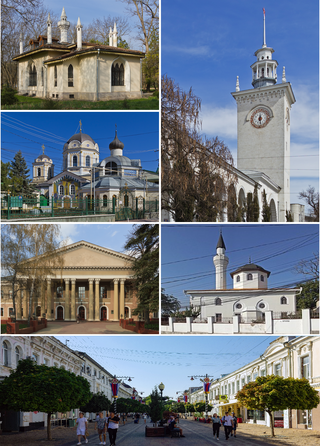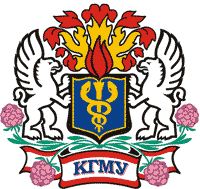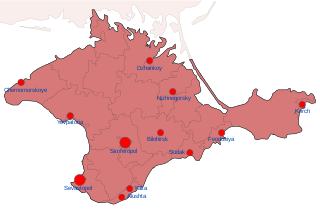
Crimea is a peninsula in Eastern Europe, on the northern coast of the Black Sea, almost entirely surrounded by the Black Sea and the smaller Sea of Azov. The Isthmus of Perekop connects the peninsula to Kherson Oblast in mainland Ukraine. To the east, the Crimean Bridge, constructed in 2018, spans the Strait of Kerch, linking the peninsula with Krasnodar Krai in Russia. The Arabat Spit, located to the northeast, is a narrow strip of land that separates the Syvash lagoons from the Sea of Azov. Across the Black Sea to the west lies Romania and to the south is Turkey. The largest city is Sevastopol. The region has a population of 2.4 million, and has been under Russian occupation since 2014.

Education in the Netherlands is characterized by division: education is oriented toward the needs and background of the pupil. Education is divided over schools for different age groups, some of which are divided in streams for different educational levels. Schools are furthermore divided in public, special (religious), and general-special (neutral) schools, although there are also a few private schools. The Dutch grading scale runs from 1 to 10 (outstanding).

Gymnasium is a term in various European languages for a secondary school that prepares students for higher education at a university. It is comparable to the US English term preparatory high school or the British term grammar school. Before the 20th century, the gymnasium system was a widespread feature of educational systems throughout many European countries.

Education in Germany is primarily the responsibility of individual German states, with the federal government only playing a minor role.

Simferopol, also known as Aqmescit, is the second-largest city on the Crimean Peninsula. The city, along with the rest of Crimea, is internationally recognised as part of Ukraine, and is considered the capital of the Autonomous Republic of Crimea, but currently is under the de facto control of Russia, which annexed Crimea in 2014 and regards Simferopol as the capital of the Republic of Crimea. Simferopol is an important political, economic and transport hub of the peninsula, and serves as the administrative centre of both Simferopol Municipality and the surrounding Simferopol District. Its population was 332,317 .

Gymnasium, in the German education system, is the most advanced and highest of the three types of German secondary schools, the others being Hauptschule (lowest) and Realschule (middle). Gymnasium strongly emphasizes academic learning, comparable to the British sixth form system or with prep schools in the United States. A student attending Gymnasium is called a Gymnasiast. In 2009/10 there were 3,094 gymnasia in Germany, with c. 2,475,000 students, resulting in an average student number of 800 students per school.
The German School of Athens, also known as the Dörpfeld Gymnasium, is a coeducational independent, kindergarten, elementary school and high school in Marousi, Athens, Greece.
Starting in September 2018, 12-year secondary education will replace 11-year which was mandatory before that. As a rule, schooling begins at the age of 6, unless your birthday is on or after 1 September. In 2016/17, the number of students in primary and secondary school reached 3,846,000, in vocational school 285,800, and in higher education 1,586,700 students. According to 2017 EduConf speech of the (then) Minister of Education and Science of Ukraine, Liliya Hrynevych, the amount of budget financing for the sphere of education would reach about ₴53 billion in 2017.

The 1st Gymnasium (Simferopol), officially Konstantin Ushinsky Gymnasium No.1 of Simferopol municipality Autonomous Republic of Crimea (Ukrainian: Гімназія №1 ім. Ушинського Сімферопольської міської ради Автономної Республіки Крим), is a secondary school (gymnasium) founded in 1812 in Simferopol, Crimea.

Konstantin Dmitrievich Ushinsky was a Russian teacher and writer, credited as the founder of scientific pedagogy in the Russian Empire.

The Akademisches Gymnasium Innsbruck is a public gymnasium grammar school in Innsbruck, Tyrol, Austria. Founded in 1562 by the Jesuits in the course of the counter-reformation, it is the oldest school in Western Austria and one of the oldest schools in the German-speaking world.
The first documented school in Lithuania was established in 1387 at Vilnius Cathedral. The school network was influenced by the Christianization of Lithuania. Several types of schools were present in medieval Lithuania – cathedral schools, where pupils were prepared for priesthood; parish schools, offering elementary education; and home schools dedicated to educating the children of the Lithuanian nobility. Before Vilnius University was established in 1579, Lithuanians seeking higher education attended universities in foreign cities, including Kraków, Prague, and Leipzig, among others. During the Interbellum a national university – Vytautas Magnus University was founded in Kaunas.

V.I. Vernadsky Taurida National University (TNU) is a public, coeducational university currently located in Kyiv. The university was founded in Simferopol in 1918 with the active participation of the geologist Vladimir Vernadsky. The university now bears his name. The university has 16 departments and 20 academic institutes. The university has the status of national and is accredited to the fourth level by the Ministry of Education of Ukraine.

The Medical Academy named after S. I. Georgievsky of Vernadsky CFU is the institution of higher medical education situated in Simferopol. According to some independent estimations, it is one of the most prominent medical schools in Ukraine. The university has 6 faculties and 54 departments. As of 2009, 4700 students were studying here. The university was decorated with Order of the Red Banner of Labour (1981) and is certified by the International Education Society as AA-level high school giving its priority under top 1000 medical university around the world.

The Vinnytsia Mykhailo Kotsiubynskyi State Pedagogical University is a university located in Vinnytsia, Ukraine. The university was established in 1912. The staff includes 30 professors along with a further 33 holders of Doctor of Science qualifications.

Oleksandr Dovzhenko Hlukhiv National Pedagogical University is a university in Hlukhiv, Ukraine. The university was founded in 1874 as a teachers institute. It was awarded the status of pedagogical university in 2001. Hlukhiv University is an integral part of the educational system of Ukraine. It is the educational establishment of the European type with powerful and effective education system, known and famous. Based on the best pedagogical traditions it follows the time demands giving profound education and training to the young generation. In more than 100 years of history of the university different social, political and economic changes in the society were reflected. It currently has three faculties and about 5,000 students.

The Republic of Crimea is a republic of Russia, comprising most of the Crimean Peninsula, but excluding Sevastopol. Its territory corresponds to the pre-2023 territory of Autonomous Republic of Crimea, a subdivision of Ukraine. Russia occupied and annexed the peninsula in 2014, although the annexation remains internationally unrecognized.
Ilya Illych Kazas b.11(23) March 1832 Armyansk – d.14(27) January 1912 Yevpatoria, was an outstanding educator, teacher and poet among the Crimean Karaites. Despite coming from a simple family background, he became one of the most prominent members of Crimea's Karaim community in his era. Ilya Kazas was a highly educated man who knew 11 languages, including 4 ancients.
The Crimean Tatar Pedagogical Institute, also known as Totayköy Pedagogical Institute, was a Crimean Tatar university which existed from 1922 to 1931. Originally located in Totayköy, the institute moved to Simferopol, after two years.

On 27 February 2014, unmarked Russian soldiers were deployed to the Crimean Peninsula in order to wrest control of it from Ukraine, triggering the Russo-Ukrainian War. This military occupation, which the Ukrainian government considers to have begun on 20 February, laid the foundation for the Russian annexation of Crimea on 18 March 2014. Under Russia, the Ukrainian Autonomous Republic of Crimea was replaced by the Republic of Crimea, though the legitimacy of the latter is scarcely recognized internationally.
















